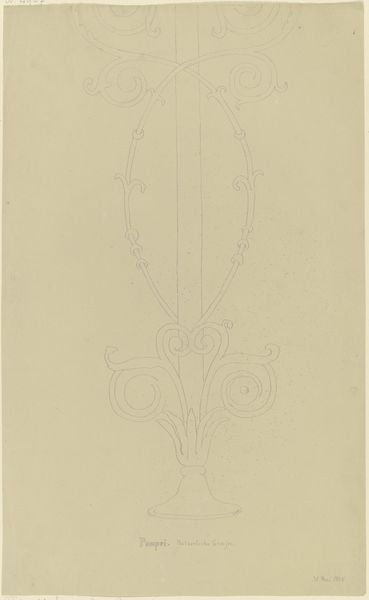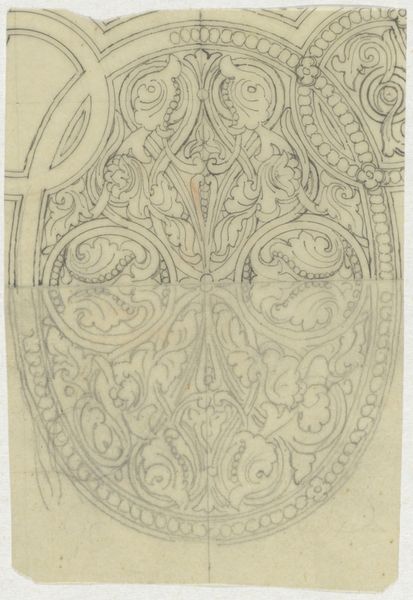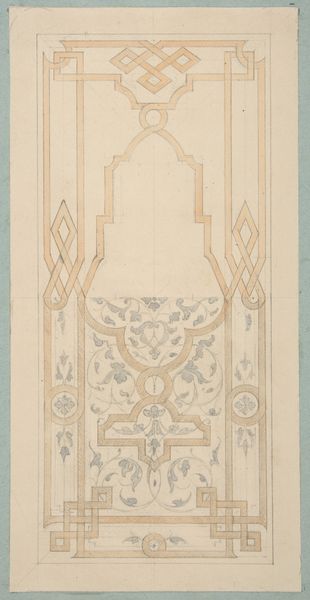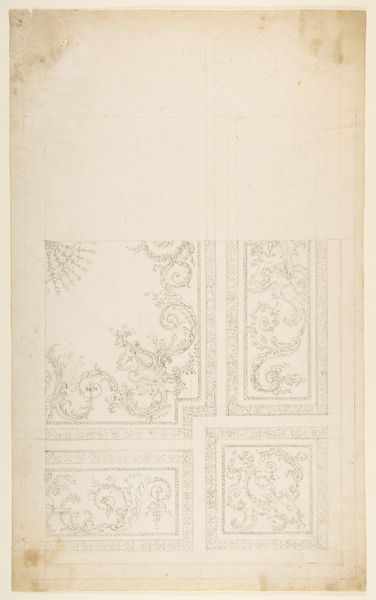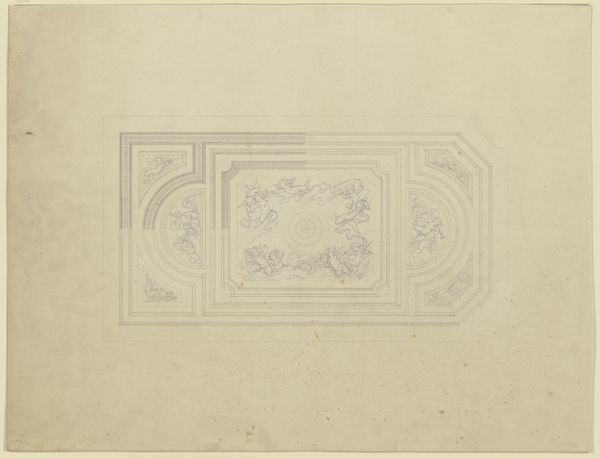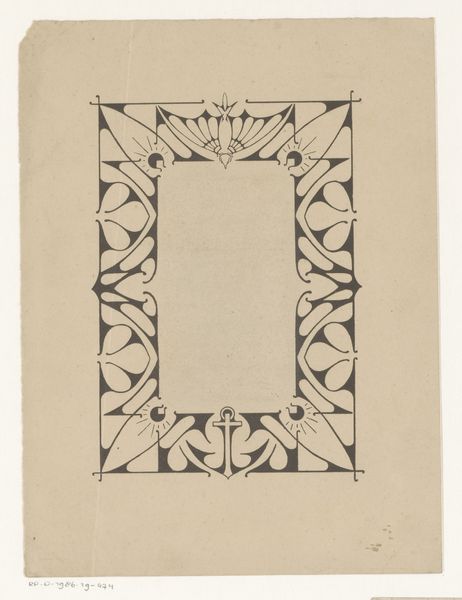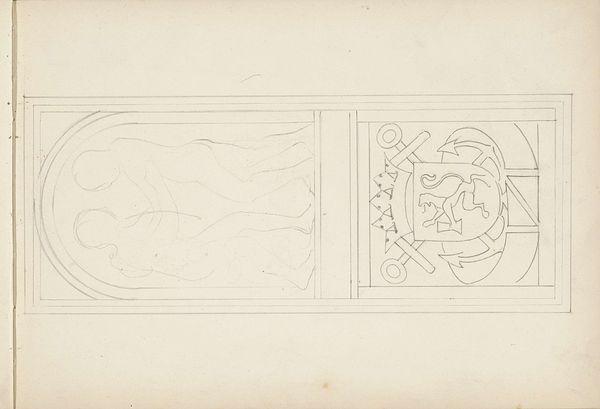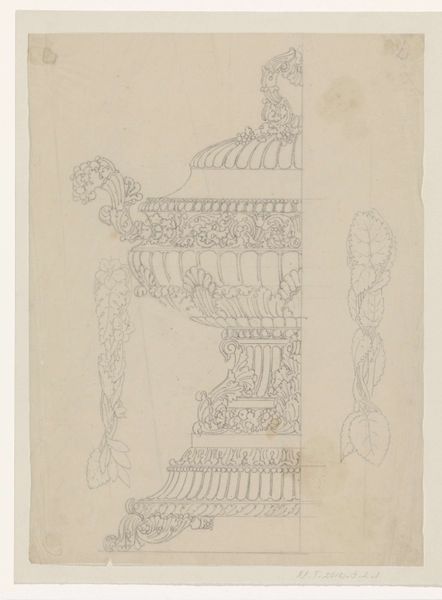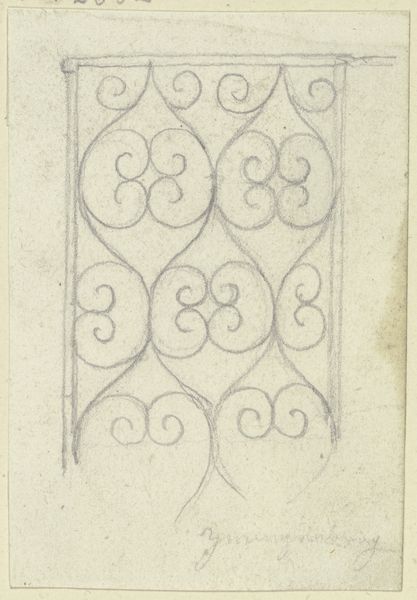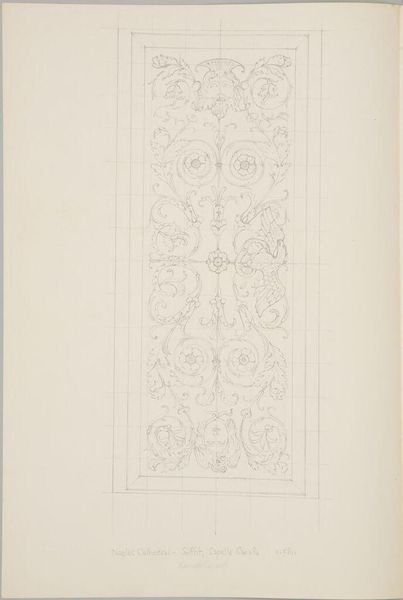
Von Löwentatzen getragener Stuhl mit geschweiften Wagen 31 - 1828
0:00
0:00
Copyright: Public Domain
Curator: Today, we’re examining Friedrich Maximilian Hessemer's "Von Löwentatzen getragener Stuhl mit geschweiften Wagen", or "Chair Supported by Lion's Paws with Curved Sides," created between 1823 and 1828. What strikes you about it initially? Editor: It feels rather ethereal. The lines are so delicate; it's as though the chair might dissolve into the background at any moment. Its presence is understated, yet the sheer amount of intricate detail somehow evokes an almost unsettling monumentality. Curator: Hessemer was a figure deeply immersed in Neoclassical ideals. This drawing, done in pencil and etching, showcases more than just a piece of furniture; it represents a confluence of power and status during the early 19th century. A chair like this wouldn't just be a place to sit, but a throne of sorts, signaling control. Who do you think such control was granted to or afforded? Editor: The symmetry and classical motifs certainly point to a desire for order and control. Semiotically speaking, the lion's paws ground the chair, literally rooting it in power, but also in masculinity. Consider the swirled design—is there perhaps an undercurrent suggesting restraint, that society and gender roles, even during a period of revolutions, were to be maintained or kept to their natural order? Curator: That reading is interesting given how revolutionary France had just upended monarchy across much of Europe, it is interesting to read such conservative ideas into it. This design aesthetic, one adopted by rising bourgeois throughout Europe, speaks volumes about their own desires to mimic aristocracy and royalty in asserting control across economic, social, and political life. Editor: So, you're seeing this level of ornamentation as a statement? It feels, structurally speaking, like a rather rigid reinterpretation of organic forms—the floral designs rendered with almost mathematical precision. It's not particularly inviting. Curator: Exactly. It’s a display of learnedness and dominance disguised as something functional, hinting at the burgeoning capitalist mindset, where even relaxation had to be ornate, justified and meticulously presented, like everything else it controlled or commanded. Editor: Considering the interplay between design, representation, and the projection of control offers fascinating insights. I came in ready to simply appreciate the technique of its clean and rather perfect lines. Curator: It serves as a potent reminder that art never exists in a vacuum. Looking beyond the form helps illuminate the social currents shaping even the most utilitarian of objects.
Comments
No comments
Be the first to comment and join the conversation on the ultimate creative platform.
